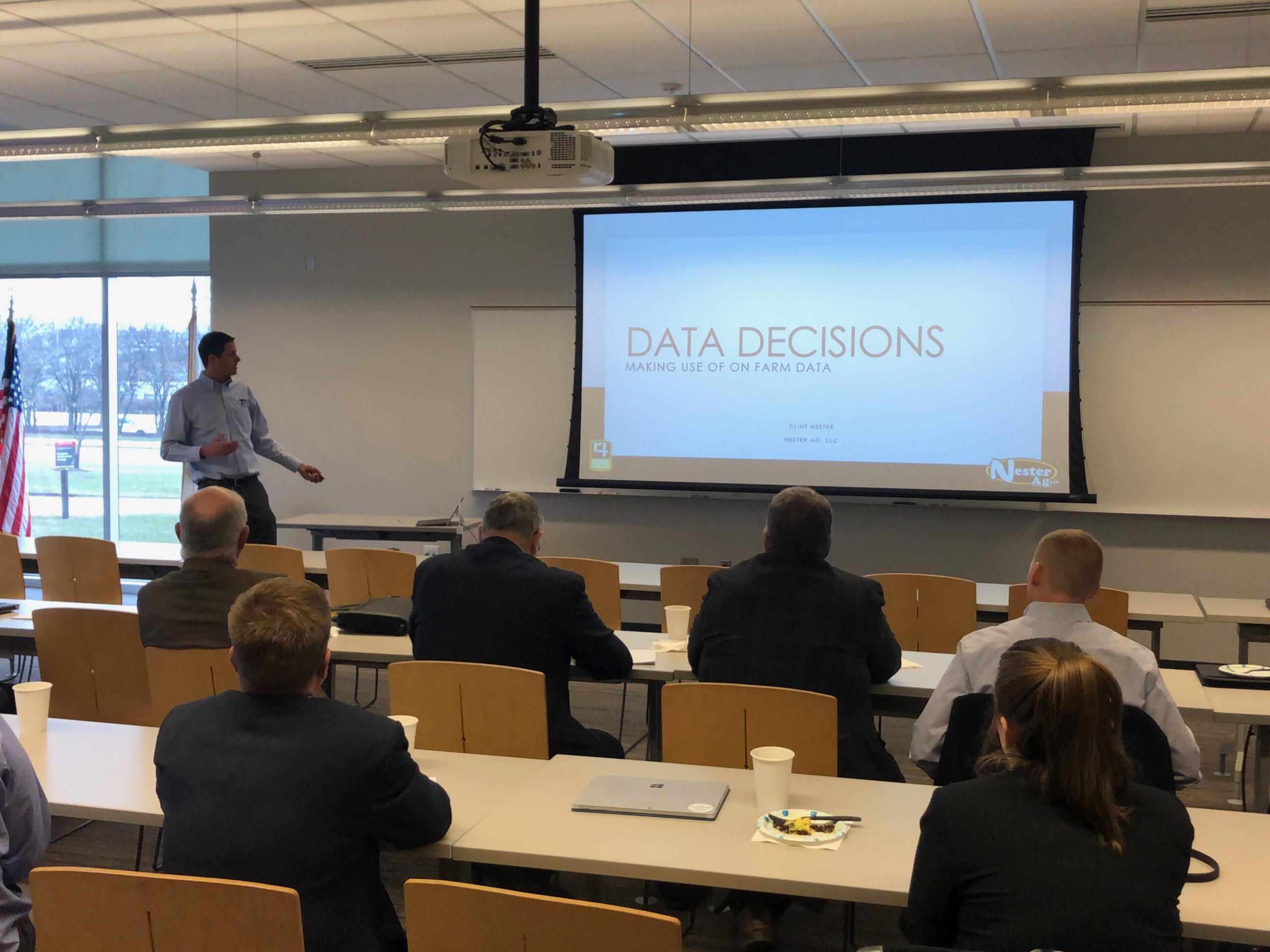Joint Board Meeting Examines Future of Soy

In January, the farmer board members of both the Ohio Soybean Association (OSA) and Ohio Soybean Council (OSC) came together for their annual Joint Board Meeting. Both organizations, which serve different purposes in promoting and maintaining the soybean industry in Ohio, converge once a year to discuss the current issues facing the industry and brainstorm ways to navigate those challenges.
This year featured presentations that were focused on the future of soybeans in Ohio. First OSC’s own Barry McGraw spoke about the new Airable Research lab, a checkoff-funded lab that will allow for more efficiency and innovation in the way that checkoff dollars are invested in new soybean products. McGraw explained that the lab will allow OSC to make more R&D projects internal and, therefore, make better use of checkoff dollars. The lab had a soft launch last year, but after getting its footing, is prepared to really take off in 2020.
Next up was Jordan Hoewischer, director of water quality and research at Ohio Farm Bureau, who presented on the new Ohio Agriculture Conservation Initiative (OACI) and how that will play into H2Ohio. Hoeswicher demonstrated the OACI certification program and explained that in order to receive H2Ohio funding, farmers will have to enroll in the H2Ohio program, with the rollout of the program beginning in the Maumee River Watershed. OSA supported the legislation that created H2Ohio and OSC is a member of OACI, demonstrating how the two groups work together on opposite sides of an issue to accomplish their goal of supporting Ohio soybean farmers.
The morning concluded with a presentation by Clint Nester of Nester Ag, an agricultural consulting business in Northwest Ohio that focuses on nutrient efficiency and recoverability. Nester covered the history of precision ag technology and where the industry will be moving in the next few years, including talking about the more manageable technologies, like drones, and the more far-fetched, like autonomous tractors. He mentioned that while the technology for driverless tractors exists, the actual implementation of that technology is still several years away for most farmers, especially as governments catch up with the regulation of autonomous vehicles.
After lunch, the leaders of both boards gave brief updates about the accomplishments of the past year and what both organizations hope to accomplish in 2020. For OSC Chairman Bill Bateson (Hancock County), 2019’s successes included an 11th R&D 100 award, completion of the Tri-State Fertilizer Recommendations, and OSC’s participation in several international trade-related conferences and trade team visits. In 2020 the checkoff plans to continue momentum on plant and product research, build and grow new markets, and develop a new three-year strategic plan to begin in 2020.
OSA President Ryan Rhoades (Marion County) also touched on his organization’s achievements of 2019, including meeting with over 50 legislators and legislative staff, supporting H2Ohio legislation and the passage of USMCA. In 2020, OSA plans to monitor possible long term water quality legislation, advocate for final resolution to trade issues, and advocate for more biodiesel and bioproduct use at federal and state levels, including a possible Ohio biodiesel incentive.
